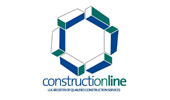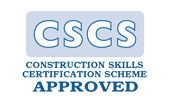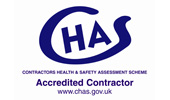Floor Levelling Screed
Floor Levelling Screed – What Are They?
I’m Andy Parkin, Managing Director of the Multi-Award Winning Speed Screed. I’m here to talk about Floor Levelling Screed.
Floor levelling screed is used widely in the construction industry to make a flat and level flooring surface. It provides strength and resistance to wear and a base layer onto which flooring can be placed.
Underfloor Heating
Floor levelling screed lends itself well to the installation of underfloor heating as it provides a good thermal layer to disseminate the heat which gives the floor a consistent temperature. The thickness can be adjusted easy so if there is a need to put in things like electrical heating cables and ducts can be incorporated with minimal effort.
Floor levelling screed is always mixed to a specific consistency and applied in a way that can level out the base making it ideal where there is a need to lay other flooring like tiles, laminate and carpets. A final flooring should always be used because the screed is not generally a wearing surface.
Construction Types – Floor Levelling Screed
There are different types of floor levelling screed depending on the slab base, whether you want to install underfloor heating or you need acoustic insulation. The final choice of flooring will also impact which screed is used:
- Bonded screed: This is laid directly on the slab or substrate in order to maximise the bond.
- Unbonded screed: Screed laid on top of a membrane which separates it from the underlying slab
- Floating screed: This is a type of unbonded screed which is used when an acoustic or thermal layer is needed
Self Levelling
One of the most useful types of floor levelling screed is the self-levelling variety. This is often free flowing and can be poured into an area, forming a thin layer that settles and flattens out an uneven floor.
It uses gravity to give a good flat surface and by mixing in latex it is also able to move and settle without cracks. This type of floor levelling screed is good to use with underfloor heating systems and there are several types available including rapid drying options for areas which need to be completed quickly.
The most commonly used levelling screed is sand and cement screed which makes the ideal base for vinyl flooring, tiles or timber.
Key factors to consider when applying floor levelling screed include:
Surface preparation – the area must be empty, clean and free from dust and grease. Any cracks must be filled using a filler and a sealer and allowed to dry.
Use primer – prime the area in accordance with the instructions and leave for 2-3 hours. The primer is ready when it has a tacky feel.
Mix the screed – this should be done in accordance with the instructions. Only make one bag at a time to avoid wastage.
Once the screed has been applied you must leave it to dry – many dry fairly quickly so you can walk on it after around 4 hours and it will be completely dry after a full 24 hours. This is when you can apply the top floor layer. Be aware that temperature and humidity can affect the drying times so be sure to double check before you go on to lay your flooring.
I hope this has been helpful in answering your floor levelling screed questions. Please get in touch for further information.
Our Accreditations
About Speed Screed
Speed Screed Limited was founded on the key principle of providing first-class customer service. It has since built itself an impressive reputation for delivering high-quality projects across the United Kingdom.
The company’s success is built on its belief in quality work, attention to detail, on-time completion, strong working partnerships and the recruitment of top-level staff. about us >








